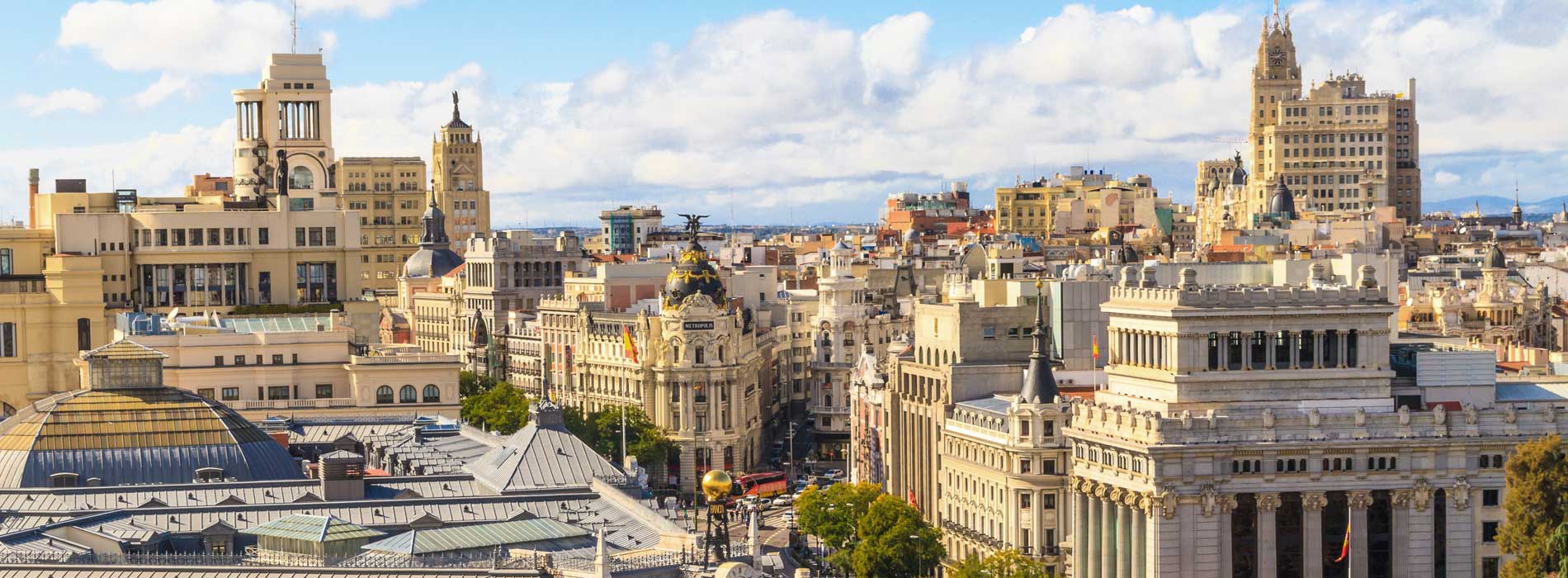Home > A city for everyone

A city for everyone

It was the main town market since the XV century, as well as the scene of numerous public events (bullfights andpublic executions).The beatification of San Isidro, patron saint of Madrid, was carried out here too.
Nowadays, it is surrounded by shops and traditional markets and hosts many concerts and shows during the festivities of San Isidro.
Nowadays, it is surrounded by shops and traditional markets and hosts many concerts and shows during the festivities of San Isidro.

Here you can find the so-called Kilometer Zero of the Spanish radial roads. The oldest building in the Puerta del Sol is the Casa de Correos (The Post Office) and it is worth noting the tower clock that was built and donated in the 19th century by José Rodríguez de Losada, whose bells mark the traditional take of the twelve grapes that welcome the new year. This event aired on television every year

One of the main streets of Madrid and symbol of the city, it begins in Alcalá street and ends in the Plaza de España. Due to the number of cinemas and theaters, the it is known as the Spaninh Broadway.
The stretch between the San Luis network and the Plaza de Callao is currently home to numerous international fashion stores.

This park, together with the Casa de Campo, represent the green zone and the lung of Madrid. Every day is visited by thousands of people, who come to the park to rest, play sports or take a boat ride around the Monument to Carlos III.

It was consecrated by Pope John Paul II on his fourth trip to Spain, on June 15, 1993, being thus the only Spanish cathedral dedicated by a pope. The main façade is opposite the Royal Palace.
It is a temple of 102 meters long and 73 meters high, built during the 19th and 20th centuries mixing different styles: neoclassical on the outside, Neo-Gothic on the inside and Neo-Roman in the crypt.
It is a temple of 102 meters long and 73 meters high, built during the 19th and 20th centuries mixing different styles: neoclassical on the outside, Neo-Gothic on the inside and Neo-Roman in the crypt.

Located in Plaza de Oriente, where the Royal Theater is also located, it is the largest palace in Western Europe in terms of extension, with 135,000 m² and more than 3,418 rooms.
It houses a valuable historical-artistic heritage, such as the Palatine Stradivarius, as well as very relevant collections of other artistic disciplines such as painting, sculpture and tapestry.
It houses a valuable historical-artistic heritage, such as the Palatine Stradivarius, as well as very relevant collections of other artistic disciplines such as painting, sculpture and tapestry.
